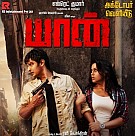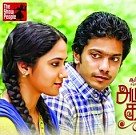“MANI RATNAM IS ONE OF THE BEST VISUAL DIRECTORS IN THE COUNTRY” – PADMA SHRI SANTOSH SIVAN
Interview Team : SudharshanSurviving through great deal of experiences, both hard and the good ones, make ordinary people into masters. These experiences take its own sweet time and make the masters honest, passionate and sometimes scathing by nature.
Here’s the second part of our interview with Padma Shri Santosh Sivan. The Master of Cinematography, in his candid conversation with our Correspondent, Sudharshan Giridhar, covers diverse topics from what makes Kajol beautiful, to the secret to his eternal youth. Read on…
If you haven't read the first part of this interview catch it here- “Vijay, Suriya And Vikram Are As Disciplined As The Actors In The West” – Padma Shri Santosh Sivan
PHOTOS & STILLS - GALLERY
The directors and actors with the most amazing visual sense…
Mani Ratnam is one of the best visual directors in the country. MF Hussain, though in a very different way, was also a very visual person.
As far as actors, after some time they understand the art of cinematography. Rana Daggubatti can handle a steady-cam well and he has a good understanding of compositions and framing.
Mostly it is not about the knowledge. If you have the interest you can always pick things up.
MF Hussain, though in a very different way, was also a very visual person.
What do you think make the Indian style of cinematography special?
Camera is just a medium. Cinematography is not looking at the camera, it means looking through it. What makes our style distinct is the tradition and culture’s influence in the technology. That is where our originality lies. When someone says they are adapting the Hollywood style of cinematography, it plainly means it is copied.
When I was honored with an ASC, I was told that the reason behind the title was my originality and my hold over my roots.
If someone says, “It looks like a Hollywood film,” I don’t take it as a compliment. Our films must have our personal touches. How is it a compliment when our product looks like someone else’s? Basically we have good visual sensibilities, particularly in the Southern part of the country. That is why, a lot of technicians from South make it big in the North industry.
The primary factor that makes our kind of cinematography distinct is the variety of cultural influences in the country. Even if it is the smallest art, we tend to make it very ornamental. Even Indian music is ornamental and so is our style of cinematography.
If someone says, “It looks like a Hollywood film,” I don’t take it as a compliment.
Can you elaborate on your “technicians from South make it big in the North industry” statement?
From whatever I have noticed, there’s no difference in the level of talent, but, we treat our art with a lot more respect. For instance, take Chenda Melam artistes. They do not need an audience to perform. They light a lamp and perform. It applies to almost all art forms in this part of the country. We worship our art and it runs through our veins.
Art is spiritual to us. We dedicate our talents to our deities by performing around it. For cinematographers like me, nature is the deity. Also nature played a very crucial part in me becoming a cinematographer.
I used to play Hockey for the Kerala state, when I was young. As a team player, my job was also to observe the chances of rain. So every day as a routine, I’d go to the terrace and look at the skies. Gradually, the skies started to take over my imagination. Some days, they’d have streaks of lights passing through them, with the sun playing in its full capabilities. The next day the dark clouds would take over and make the greens around me look more vibrant. Every day, the skies gave me a different experience and I started to enjoy it. Back then I didn’t know I was going to learn photography and become a cinematographer one day. But, later I started realizing that I had become a cinematographer gradually and not in a span of few years when I learnt photography. I realized I was observing things for most part of the day and the art was actually becoming a part of me. I observed the lights, their nature and their behaviors. I understood that everything that is beautiful was there in front of us and we just have to notice it.
I started realizing that I had become a cinematographer gradually and not in a span of few years when I learnt photography.
But how do you always manage to spot the right things?
Everyone has different perspectives. Take faces for example. One might thing every feature in his or face is perfect, except for the nose and he/she might not be happy about it. But it could be the nose that actually makes his or her face interesting.
I did a Malayalam film long time back, Perumthachan. I had even won a National Award for it. The story of that movie revolves around a master craftsman, who makes sculptures with impeccable features. Later, when his son comes into the business, he includes slight imperfections in his statues, which the people seemed to love even more.
So my point is, sometimes, even the small imperfections can make a splendid visual.
What makes Kajol so beautiful is that she doesn’t care about what it takes to look much more beautiful. It is an awesome quality. She loves her natural looks.
Sometimes, even the small imperfections can make a splendid visual.
What kind of transitions do you see happening currently in Tamil cinema?
Things have been happening very fast lately. The good thing is that, with the birth of the digital technology, more youngsters are braving into cinema, which is a great sign. Filmmaking is becoming easier.
Children are learning to use their mobile phones and the camera, even before they learn to read properly. It is good to see that visual medium is getting more accessible. But, I’m not sure yet if it is a good or a bad sign as a whole.
Earlier, we used to sketch a lot. Sketching involved a lot of observation. Today, we take snaps and it’s done in seconds. I don’t want the current generation to miss out on the awesomeness in observing things. I’m saying this because, not everyone who can read and write becomes writers. Similarly, taking snaps alone cannot make you good cinematographers.
Not everyone who can read and write becomes writers.
Direction or cinematography- the challenging one…
Both are two different things. Cinematography is more like Zen art, purely creative. You get to interact with the visuals if you really want to. Direction needs a lot of creativity, but it also involves organizing skills. Being a director also gives me the liberty to tell a story that I want to. It allows me to tell a story like Inam that really inspired me.
When I showed Inam to the girl, who inspired me to make the film, she cried for two days. Direction can help you to make stronger impacts on people.
Cinematography is more like Zen art, purely creative
Does the cinematographer in you interfere much when you are directing a film?
I don’t see it that way. For instance, when a musician makes a film, he makes it very musical. If a sound engineer makes a movie, he might use the audio medium to narrate the story. So, no matter how you present it, in the end there is always a story.
I think visual is a universal language. So, when I do a film, there’ll definitely be a heavy influence of the art that I know well.
I think visual is a universal language
What were your initial reactions when Inam was banned?
Sometimes, we have to act mature, no matter how hard it is. When a film that is stressing on non violence through the eyes of a refugee girl, who has seen a lot of hardships, is creating violent acts in real time, it doesn’t serve the purpose. Then, it is only right to pull that film out of the theaters and talk to the concerned people.
But I do hope, I get to show the film to the people someday. We’ll see.
What else are you currently doing?
I have done a film for Adishakti Theatre, Pondicherry. I have filmed one of their works called ‘I’m not Sita’. The film was a part of a workshop I conducted for the group of actors of Adishakti.
I’m also making an English film right now. It’s called Benares. It’s a proper feature involving a bunch of foreign actors.
I’m also making an English film right now
Life after Padma Shri
Same as the life before Padma Shri. All the awards I’ve been blessed with, be it the fourteen National Awards or the Padma Shri, I consider them as impetus to do more good work. I consider every recognition as a starting point. It allows me to challenge myself every time. In these pacy times, it helps me stay passionate, alert and flexible, so that I can remain competitive. It is also the secret to my eternal youth (laughs)!
Thank You Mr.Santosh Sivan! It was an honour!
All the awards I’ve been blessed with, be it the fourteen National Awards or the Padma Shri, I consider them as impetus to do more good work.
FACEBOOK COMMENTS
OTHER LATEST INTERVIEWS
CINEMATOGRAPHER SANTOSH SIVAN RELATED NEWS
- ''Suriya, Vijay and Vikram stand for commitment, sincerity and passion''
- Hot - Mani Ratnam finally opts for the youth sensation
- Anjaan, with twists and turns
- Want to know what Mani Ratnam felt about Jigarthanda?
- After Mani Ratnam, it isn't Gautham Menon ...
- Happy Birthday Suriya !
- ''No one should identify me as Suriya''
- Anjaan would be different from Thuppakki
- Another honour for the legendary Santosh Sivan
- The day Amala Paul and Vijay have been waiting for…
- Mani Ratnam – Mahesh Babu project dropped
- Celebrating Isaignani Ilaiyaraja and Mani Ratnam’s birthday
- Two magicians of Indian Cinema were born today
- A.R.Murugadoss' two legendary idols
- ''I had a tough time with Mani Ratnam's Thalapathi'' - Rajini
CINEMATOGRAPHER SANTOSH SIVAN RELATED LINKS
- “Vijay, Suriya and Vikram are as disciplined as the actors in the west” – Padma Shri Santosh Sivan (Part 1)
- Actress TR Omana Grand Daughter Wedding Reception
- A perspective of cinema; the untold story of INAM (CEYLON)
- Box Office 2014: First Quarter Report
- Making of Inam
- Inam- Review
- Inam Movie Screening to be Stopped
- Inam – An illuminating experience!
- Mani Ratnam - Gopala Ratnam Subramaniam | The name you didn't know! - Slideshow
- Inam Movie Review
- Santosh Sivan Interview
- Vairamuthu watches Inam
- Inam premiere in Mumbai
- Inam premiere in Mumbai










